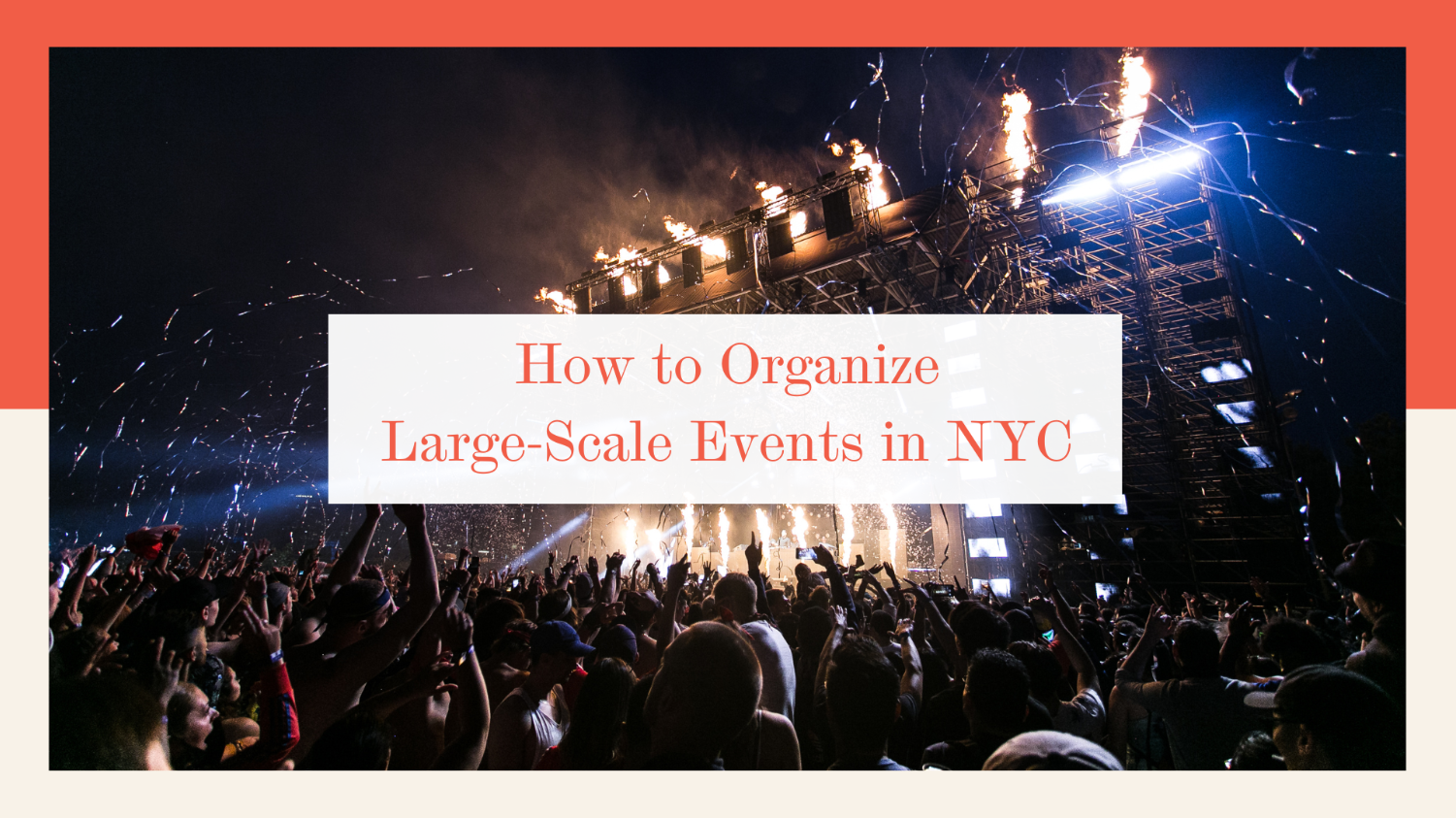Planning and pulling off a massive event in the bustling metropolis of New York City is an adventure that will get your adrenaline pumping.
But let’s face it, it’s no walk in the park either. The city’s vibrant energy brings excitement, but it also comes with its fair share of challenges.
Whether you’re putting together a kickin’ music festival, a heartwarming charity gala, or a bustling trade show, the secret sauce to achieving success boils down to three things: careful planning, flawless execution, and a knack for maneuvering through the city’s vibrant landscape.
That’s where this guide comes in!
We’re here to be your trusty sidekick, guiding you through the crucial steps and dishing out valuable insights on how to organize an unforgettable large-scale event in the magnificent Big Apple.
Let’s dive in!
Understanding the Scope of a Large-Scale Event in NYC

Large-scale events in NYC are more than just gatherings; they are grand spectacles that captivate attendees and leave lasting impressions.
From iconic parades like the Macy’s Thanksgiving Day Parade to music festivals like the Governors Ball, the city has witnessed numerous remarkable events.
To organize such an event, it’s very crucial that you understand the scale, impact, and challenges that come with it.
The sheer magnitude of logistics, permits, and audience management requires careful consideration and strategic planning.
Preparing for a Large-Scale Event: The Planning Phase
The success of any large-scale event hinges on thorough planning. Begin by establishing clear goals and objectives. Are you aiming to entertain, fundraise, or create awareness?
This will shape the direction of your planning efforts. Develop a comprehensive event planning checklist that covers all crucial elements, such as venue selection, permits, budgeting, sponsors, and a timeline.
Breaking down these tasks into manageable steps will help you stay organized and on track.
Assembling an event planning team is vital.
Assign specific responsibilities to team members based on their expertise and strengths. Effective communication and collaboration are key during this phase.
Utilize project management tools, hold regular team meetings, and encourage open dialogue to ensure everyone is on the same page.
Executing a Large-Scale Event: The Implementation Phase
Now that the planning phase is complete, it’s time to bring your vision to life.
Event logistics and infrastructure are paramount. So you have to make sure you have a detailed plan for the stage setup, sound and lighting arrangements, and crowd control measures. The safety and comfort of attendees should be a top priority.
Talent acquisition and management play a significant role in the success of your event. Book performers, speakers, and entertainers who align with your event’s theme and objectives. Collaborate with vendors and suppliers to ensure seamless coordination.
Remember, the devil is in the details, so pay attention to contracts, agreements, and deadlines. Promoting your event and selling tickets is crucial for attracting attendees.
Leverage the power of social media, online marketing, and partnerships to create buzz and generate interest. Engage with your target audience, offer early bird discounts, and explore collaborations with influencers or local media outlets to expand your reach.
During the event, it’s essential to have a well-structured and organized flow. Implement efficient registration and check-in procedures to minimize wait times.
Additionally, have contingency plans in place for unforeseen circumstances and be prepared to troubleshoot issues swiftly.
Flexibility and adaptability are key when dealing with the dynamic nature of large-scale events.
Post-Event Wrap-up and Evaluation
After the event concludes, take the time to evaluate its success. Assess key performance indicators, such as attendance, revenue, and attendee feedback.
Gather insights from attendees, sponsors, and partners through surveys or interviews. This feedback will help you identify areas of improvement and refine your future event strategies.
Conduct a comprehensive event evaluation that encompasses financial analysis, logistical challenges, and stakeholder feedback.
Use this evaluation to identify strengths, weaknesses, and areas for growth. Additionally, capitalize on the success of your event by showcasing highlights through post-event marketing. Leverage the event’s impact to attract sponsors, partners, and attendees for future events.
Conclusion

Planning and executing a large-scale event in the heart of New York City is an exhilarating and fulfilling journey.
By following this ultimate guide and employing strategic planning, effective execution, and continuous evaluation, you can create a memorable event that leaves a lasting impression.
Remember, every successful event begins with a solid plan, a dedicated team, and a passion for creating extraordinary experiences.
So, go ahead, start planning, and make your mark in the world of large-scale events in the Big Apple!
By the way, while you eagerly await our next blog installment, why not maximize your time by delving into a treasure trove of curated resources available on our website?
Discover a wealth of valuable information right at your fingertips.
Simply click here to explore them all.
